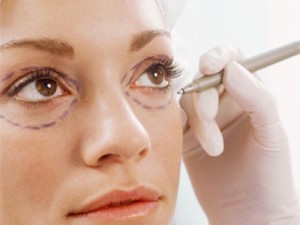 Although your board certified ocularist will try their best to deliver the most naturally appearing prosthetic eye, there are times where additional surgery can be utilized to improve the cosmesis. At Ocular Prosthetics, Inc. we work closely with a number of board certified oculoplastic surgeons who can speak with you further about the various procedures available. The following information is provided as a general resource, individual procedures and results will vary.
Although your board certified ocularist will try their best to deliver the most naturally appearing prosthetic eye, there are times where additional surgery can be utilized to improve the cosmesis. At Ocular Prosthetics, Inc. we work closely with a number of board certified oculoplastic surgeons who can speak with you further about the various procedures available. The following information is provided as a general resource, individual procedures and results will vary.
To address the “sunken in” appearance of the socket, familiar to some prosthetic eye patients, a volume augmentation surgery is recommended. This secondary surgical procedure is typically performed with a “floor implant” or “fat graft technique”. The sled or floor implant is designed to boost the original orbital implant, providing support and iris position alignment. This is accomplished by placing the floor implant underneath and behind the existing orbital implant. The fat graft technique is utilized to fill in the sunken appearance of the upper eyelid or sulcus. Fat deposits from another part of the body are trimmed and implanted into a surgically made pocket in the upper lid. Both procedures are relatively painless and can be performed without hospitalization.
To address eyelid laxity, or drooping of the upper or lower eyelid, simple surgical procedures can be performed to tighten them. In both cases of lower lid laxity, and upper lid ptosis, the severity of the drooping will indicate which procedure will be performed. A board certified oculoplastic surgeon is always your best resource for information concerning these procedures. The staff at Ocular Prosthetics, Inc. would be happy to provide you with an accredited surgeon in your area. As a courtesy, please consult with your board certified ocularist before scheduling any cosmetic procedures that could affect the look and feel of your prosthetic eye.

